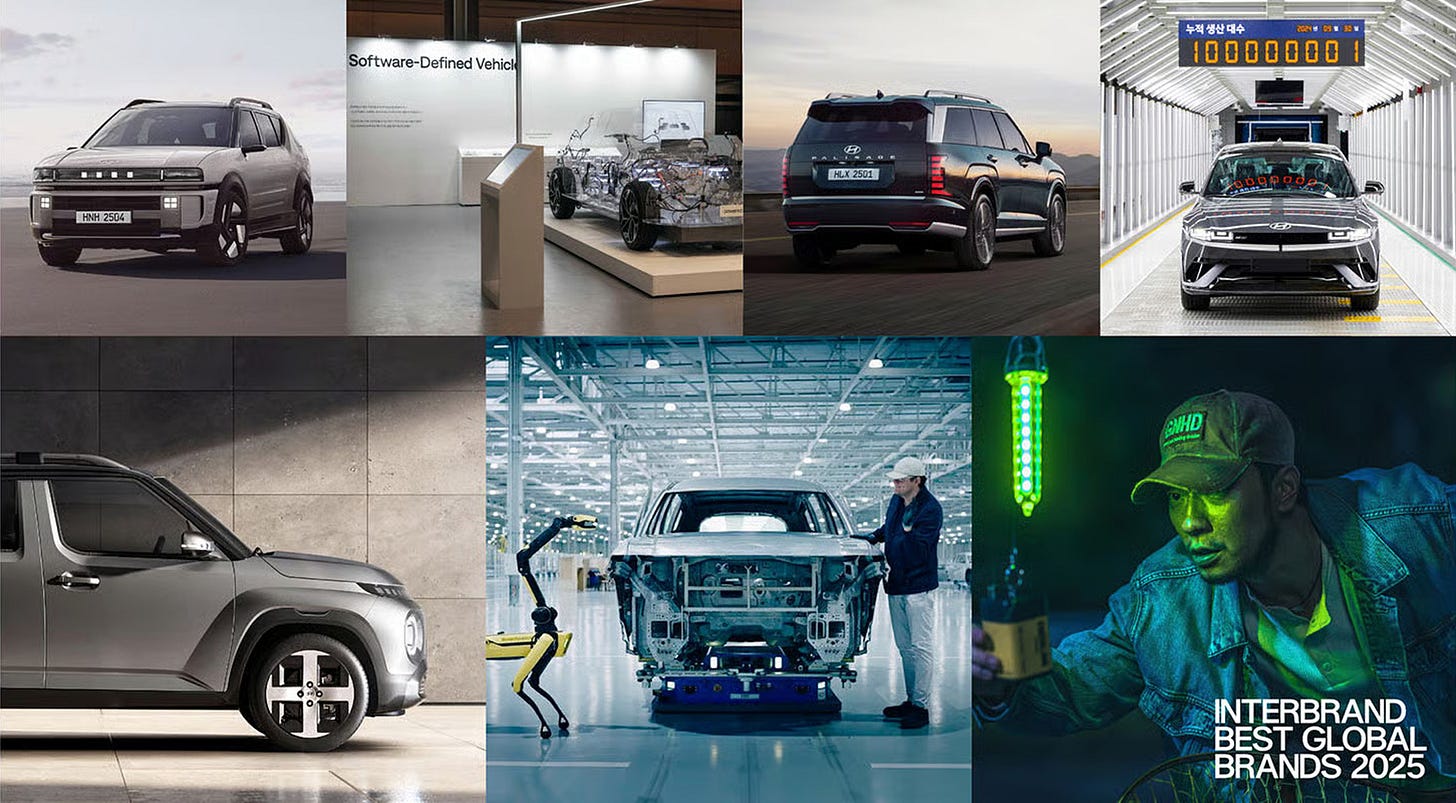Signal: What the World’s Strongest Brands Reveal About the Built World’s Blind Spot
A Look at the Latest Interbrand Best Global Brands Report
Welcome to the inaugural edition of Bloxspring Signal — our new series exploring what’s new, trending, and occasionally strange across brand, communication and cultural relevance in the built world.
Each autumn, Interbrand releases its Best Global Brands report, a ranking that captures how the world’s imagination is distributed. The 2025 edition, Radical Realities, places the total value of the top 100 brands at $3.6 trillion, an increase of $150 billion on the previous year.
The familiar leaders remain in place. Apple, Microsoft and Amazon hold the top three positions, while NVIDIA, YouTube and Instagram rise rapidly. The overall picture is of a global economy that continues to reward clarity, simplicity and cultural reach.
For those working across the built world, however, the list tells a quieter story. Siemens appears again. Schneider Electric enters for the first time at number 65. Beyond these, few names relate directly to the physical systems that keep our cities running. Real estate, construction, energy and infrastructure companies rarely feature. For a sector that accounts for much of the world’s carbon footprint and investment, this absence feels more revealing than the rankings themselves.
A new economy of meaning
The 2025 report focuses on how artificial intelligence is reshaping choice. Interbrand’s analysts describe a collapse in the traditional customer journey as algorithms begin to mediate between people and products. In this new environment, a brand must be recognisable to machines as well as to minds.
The world is shifting from campaigns to conversations. Instead of searching, people will soon ask questions of digital agents that decide what to recommend or buy. The transaction will take seconds. For most brands, the only way to remain visible in this compressed journey is to be known instinctively.
Technology may be driving this change, but emotion still determines who wins. The brands that thrive are those with a clear reason for being and a human tone that travels across channels. NVIDIA speaks to ambition, Booking.com to freedom, and Apple to creativity. They are concise ideas expressed with care.
This is where the built world struggles. Its companies tend to describe their work in technical or functional terms. They talk about compliance, safety and sustainability but rarely about experience or feeling. These values are essential but insufficient to generate affection.
The built world and its silence
The lack of representation in Interbrand’s list does not suggest a lack of importance. The problem is visibility. The built world often hides its influence behind systems and standards. It creates the conditions for life but rarely the language to describe them.
Schneider Electric is an exception. The company has spent years repositioning itself from an engineering specialist to a champion of electrification and efficiency. Its “Life Is On” message is direct, human and credible. It speaks to progress without overstatement. Siemens has done something similar, using “Ingenuity for life” to bridge the industrial and digital. Both have found a way to express technical excellence through a social lens.
These examples show what is possible when companies combine precision with purpose. They suggest that even in infrastructure, where outcomes are often unseen, meaning can still be designed and communicated.
The rise of agentic commerce
One of the most intriguing ideas in the report is “agentic commerce”. It describes how artificial intelligence will soon carry out purchases on behalf of consumers. The partnership between OpenAI and Shopify offers an early glimpse of this. A person might ask a digital assistant to “find a sustainable lighting system,” and the transaction would complete automatically.
In this world, brand loyalty becomes fragile. If people have no emotional attachment to a name, they will allow algorithms to choose for them. The same logic applies in B2B markets. Procurement systems already reduce decades of craftsmanship to a price point. Artificial intelligence could extend this trend unless companies assert their relevance.
The response lies in focus. The brands that perform best in Interbrand’s ranking are those that solve a single human need with conviction. When they expand, they do so naturally because their purpose is understood. The built world has similar potential. Its task is to define its promise in human terms. What does an intelligent building offer beyond efficiency? What emotion does a resilient city evoke? These are questions of language as much as leadership.
A measurable advantage
Interbrand uses a measure called the Role of Brand Index to quantify how much a company’s brand influences purchasing decisions. A one-point increase in this index correlates with a 2.3 per cent rise in share price. Meaning, in other words, can be measured.
For the built world, this presents an opportunity. The sector’s products and services are essential, yet their distinctiveness is often invisible. Firms that can translate reliability into recognisable identity will find that perception supports valuation. In a market where algorithms increasingly determine visibility, clarity becomes capital.
What the list tells us
Schneider Electric’s arrival in the top 100 offers a hint of what the future could look like. It shows that a company rooted in engineering can achieve cultural relevance without sacrificing rigour. The journey required patience, consistency and a willingness to speak in plain language.
For most built world brands, the challenge is similar. The aim is not to mimic the tone of consumer technology but to tell stories that make infrastructure feel indispensable. Buildings, grids and transport networks are the foundation of modern life. They deserve to be understood as such.
The 2025 Best Global Brands report is more than a snapshot of value. It is a reflection of what the world notices. At present, the built world remains out of frame. That can change. With clearer voices and stronger narratives, the companies that shape our physical environment can also shape the cultural one.
Until then, the lesson stands. Markets may reward efficiency, but people invest in meaning.


